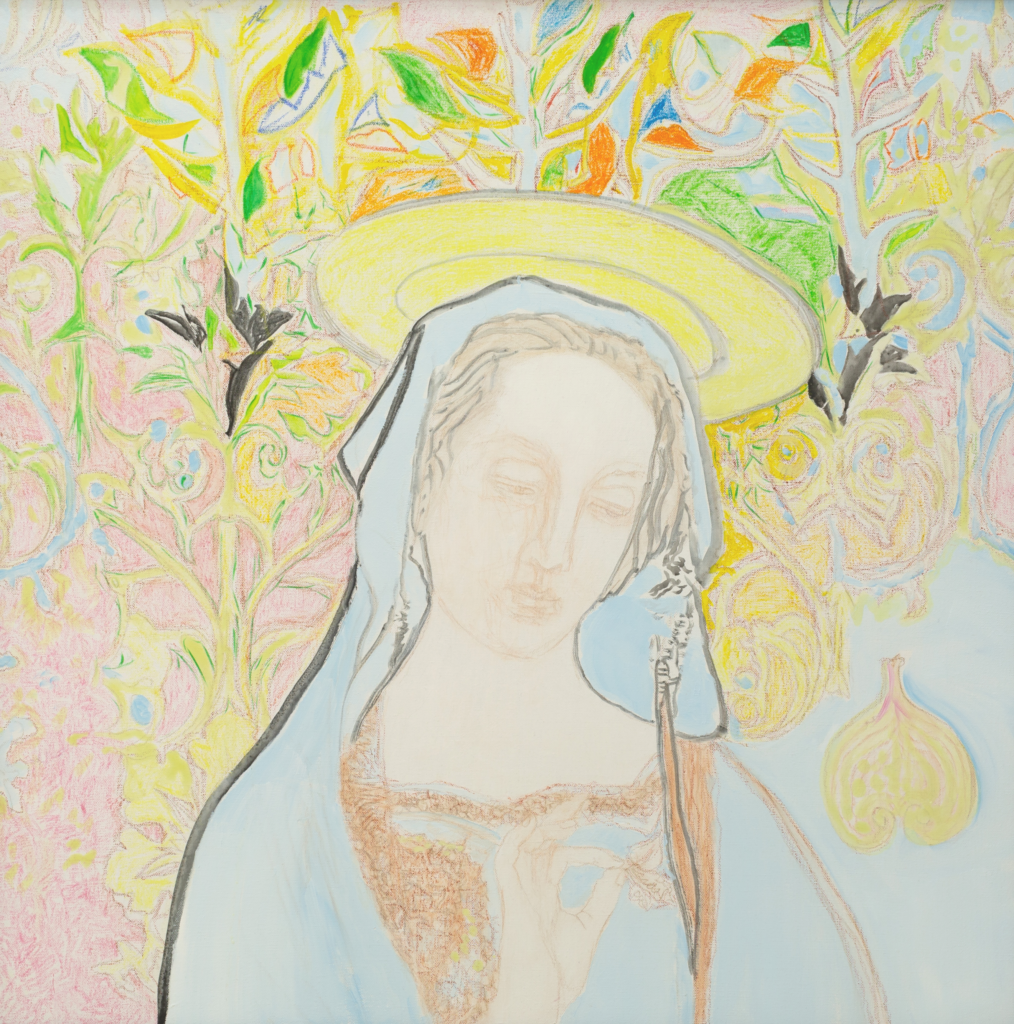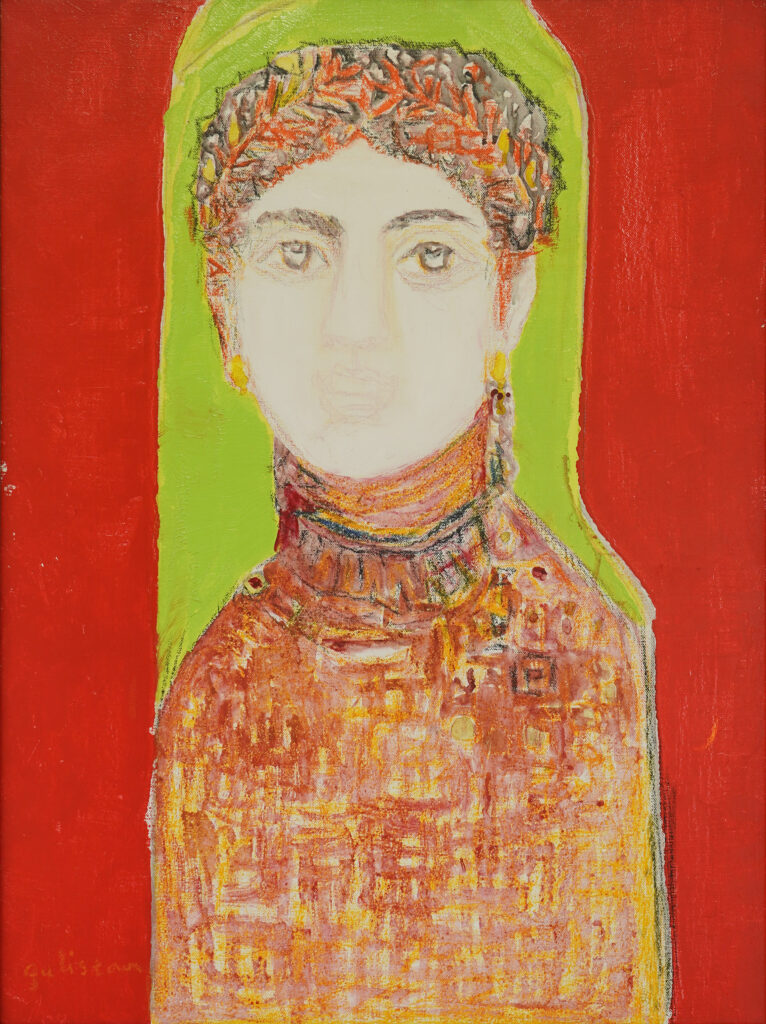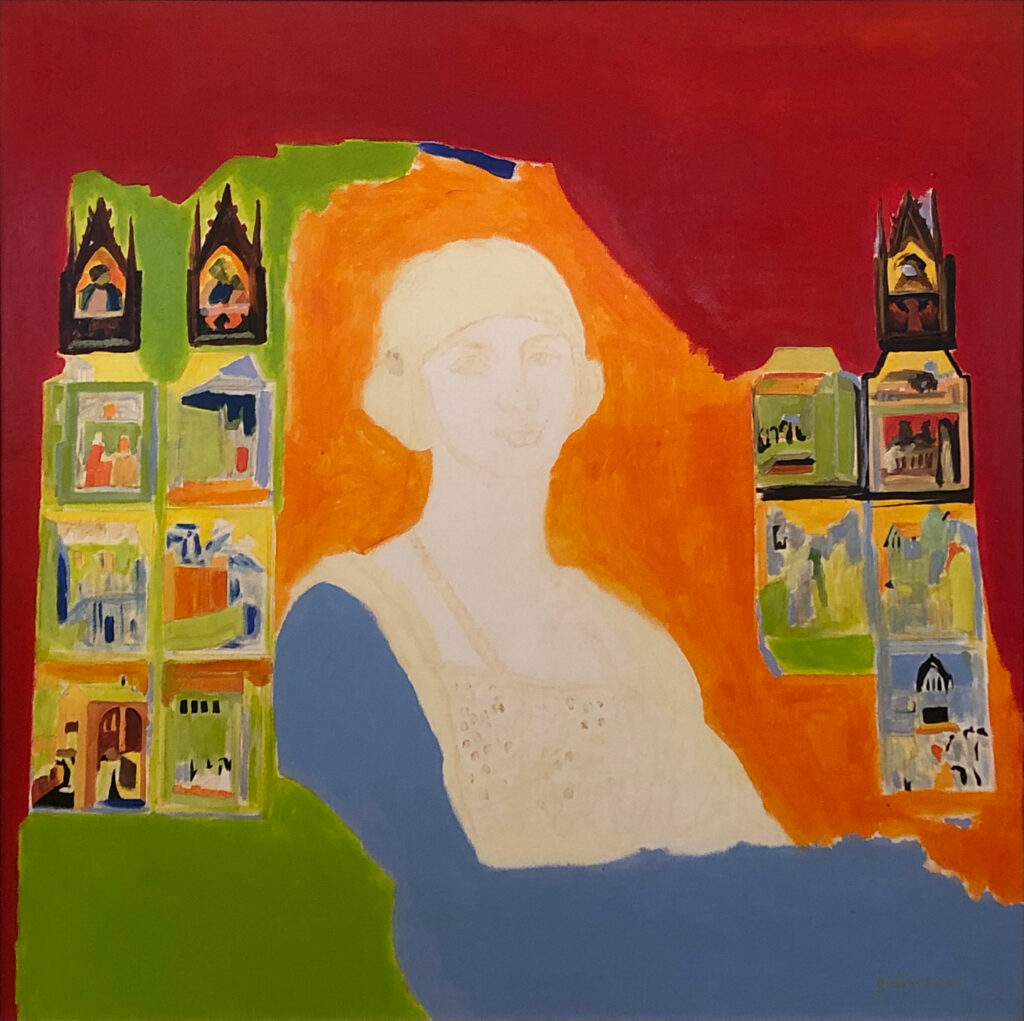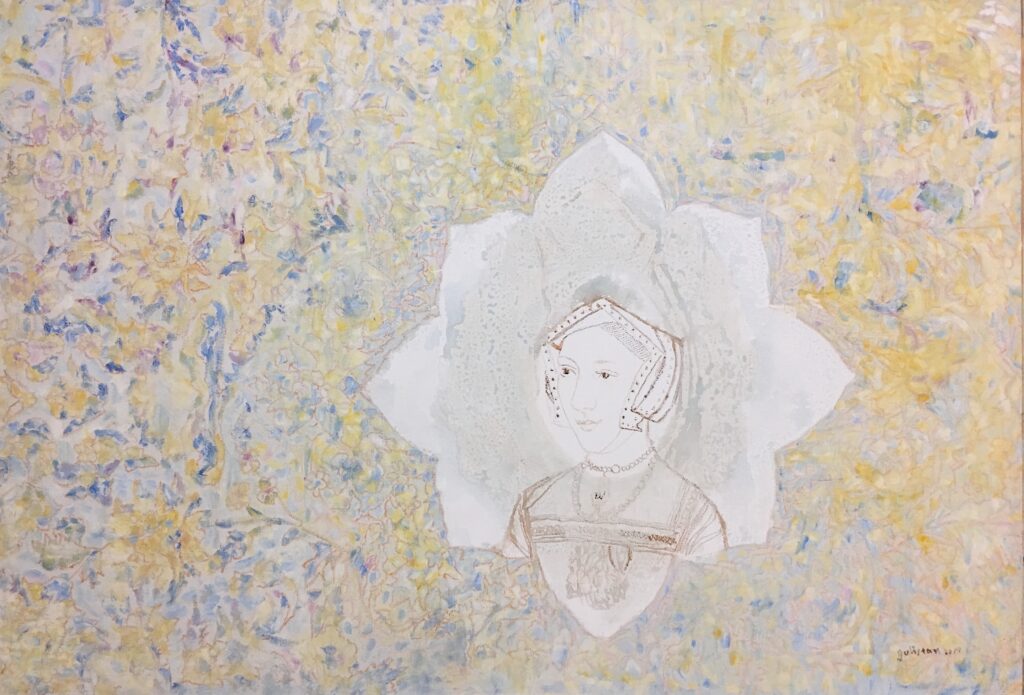Curator’s Interpretation-“The Shape of Gulistan’s Psyche”
Michelle Mope Andersson, D.Min.
I’m very happy to share with you a little bit of Gulistan’s artwork, and also to share with you how I came to know Gulistan’s work.
It was in the autumn of this year that I was at an exhibition which Gulistan was holding. And this piece, this Madonna like imagery, struck my imaginations came directly spoke directly to my heart. And I wanted to know more about Gulistan and her background. it turns out that Gulistan and I both have the same great interest in two artists. one is Giuseppe Castiglione who came to China to work for the QianLong emperor in the 1700s as an artist and also as an architect.
The Shape of Gulistan’s Psyche
I started to see this connection in Gulistan’s work between Giuseppe Castiglione who was known here in China is Lang Shining. And Gulistan’s painting style in the colors and in the gentleness. And this really touched me very deeply. It also moved me greatly that Gulistan had lived in Italy and had studied in Padova, and in Padova is the work of one of my earliest favorites Giotto. So Giotto painted the Scroveni Chapel in 1395. And it turns out that Gulistan had painted there as well. So immediately, our paths from east to west, between China and Italy began to link to connect with one another.
And then I became deeply interested in this painting at the Madonna, something that really strikes me about this piece of art is not only the gentleness of the coloring, the gold and halo about the woman,the woman of women. I see in her face, the face of many women across reaching across China, reaching across Europe. It’s as if there’s a oneness in the face of this image of the woman of women, and I of course also see Gulistan’s face and mind to some degree as well. I see a reflection when I look at this painting at this piece of artwork. I also notice sort of ethnic design, ethnic patterns, which mean we might find in cultures, even in Latin America or in North America. We find it across China in the step region, in the grasslands. And this all comes weaving through in Gulistan’s painting. There’s a real fragility, a gentleness, which is a taste of Gulistan’s own personality coming through in the artwork. There’s a kind of a brick lay, a layering, a weaving together. And it’s as if this piece of a piece of fresco freshness, a fresco has come off the wall, come to life. And it’s here with me in the livingroom today.
Memory of the portrait V
When you have a piece of artwork in your home, you bring the spirit of the artist into your living space. And so each day, as I meet Gulistan’s paintings in my own home, I’m blessed to have her presence with me. There’s a kind of dialogue that goes on in her artwork. It’s a dialogue between Gulistan and myself. It’s a dialogue with the painting. And for me, it’s also a dialogue with Maria, the woman of women, the mother of Christ.
Here we see that this Madonna holds in her hands very gently, very fragile, a leaf piece of nature. And I think that this is so deeply timely in our environmental crisis in the world today. It’s as if she holds in her hand, a piece of memory, a piece of a bygone time a bygone era, gently in her fingertips. And it kind of serves as a reminder to all of us that we are in some way, responsible for this very peace of fragile nature which we hold in our hands that might be a bud, it might be a seedling, might be a child, it might be an idea or even a memory that is being held gently between the fingertips. It might also be a paintbrush. This might be a symbol for Gulistan’s own work, her gently holding in her fingertips a paintbrush, a memory, an idea, a hope, and also a dream.
Former glory III
One of my own dreams has been to bring Gulistan’s work to Italy, to build the bridge between China and Italy and to bring Gulistan’s work back to where her studies brought her. And so we have as a hope to bring, as a plan in fact, to bring Gulistan’s work to the Certosa di Galluzzo in the end of 2022 into 2023 for an exhibition in a magnificent monastery museum space. The Certosa di Galluzzo lies on the pilgrimage route between Rome and Florence. It’s about 15 or 20 minutes outside of the center of Florence. And so it’s a place that has been visited by thousands or even millions of pilgrims, people much like ourselves, on a journey on a spiritual journey, following culture and following hope and faith, in something greater than all of us in art, in creation, in creativity itself. Working together with Gulistan, we are preparing now the pieces which will travel with us to Florence to be displayed on these magnificent walls of the 13th century where Gulistan’s pieces really fit in a perfect sort of way.
Gulistan’s work is timeless. It speaks of an era that is bygone and yet with us very present in this moment today. So although we may look at an image of a woman clothed in renaissance or late medieval clothing, we notice that her face tells a story. It speaks of something that we can all relate to in our modern world today. Gentleness, caring, taking care of nature, taking care of one another, taking care of history, taking care of memory. For me, it’s fascinating also that in the background of this painting and amidst these very gentle colors of the Brucale. we see very much of the tuscan sun, a touch of tuscan sun that warms the Certosa di Galluzzo. And we also see patterns from the step, from the grasslands, from the silk road crossing China, crossing Eurasian Empire, toward Venice, towards Rome, towards Florence. Gulistan’s paintings, you see, they cross time and they cross space. They have a richness in color, in the background which recalls for us a memory, a memory of history, a memory of the past, and a hope for the future.
Reminiscing classics
Another thing that strikes me about Gulistan’s work, especially from the most recent, 3 or 5 years, is this very beautiful, porcelain, fragile face, which we see throughout Gulistan’s paintings of the last few years. In the eyes we notice that there is not a direct gaze, the figure looks away. She looks or he looks back in time, back to a bygone era. Something has changed something that we cannot quite grasp, that we cannot hang on to something has changed. And there’s a longing in the face, which speaks very much of what we feel in our hearts. A longing for a time has gone by us. The background imagery also speaks of the richness in the diversity of nature. We see illusions of trees, illusions of birds, illusions of the sky, and illusions, even of fruit, of our fruitfulness. What happens when we plant the seeds of ideas, the seeds of hope for future generations? How do we preserve that? How do we care for it? How do we foster it? How do we bring it to life? And that is very much what I see in this image of the Madonna painted by Gulistan in 2019.



